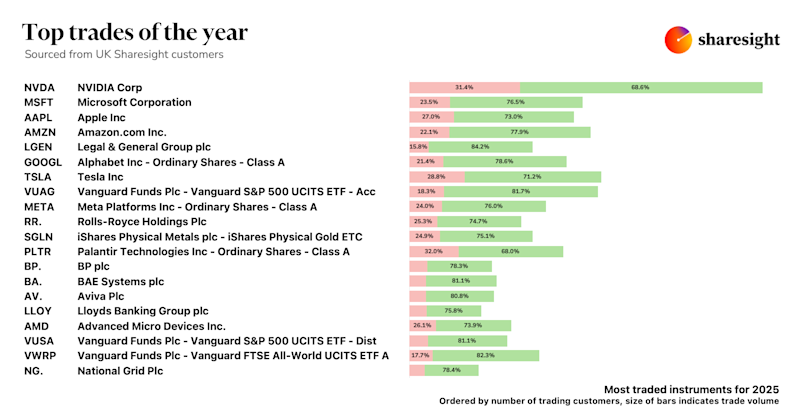What is dividend yield?
If you’ve ever considered getting into dividend investing, you’ve probably looked into stocks with high dividend yields. While this is a valid investment strategy, it’s important to understand some of the pitfalls of choosing a stock based on its dividend yield, and how you can avoid falling into the "dividend yield trap". To learn more about dividend yields, the pros and cons of dividend investing and why Sharesight is the ultimate tool to keep track of your dividends, keep reading.

What is dividend yield?
Some companies choose to pay dividends, which means a portion of their income is divided amongst their shareholders. The dividend yield is simply a percentage term that shows how much the company has paid out in dividends relative to its share price. Hence, this number can be obtained by dividing the dividend price by the share price and converting this to a percentage.
What is the dividend yield formula?
The dividend yield formula is the annual dividend per share, written as a percentage of the current share price. For example, if a company’s annual dividends are $5 and the stock is trading at $100, then the dividend yield is $100 / $5 = 5%.
How is the dividend yield calculated?
When determining a company's dividend yield, you will need to look at its most up-to-date dividend paid per share as well as the price their shares are currently trading at on the market. You can find these details in the company’s annual financial report or by looking up the dividend value in Sharesight.
Another more nuanced way to determine dividend yield is to look at the "trailing" dividend yield. This method gives the dividend percentage paid over a period of time, usually a year. Given over a period of 12 months, a trailing dividend yield will include all dividends paid in the previous year in the final calculation of the dividend yield.
For a simpler way to project your dividend earnings, try our dividend calculator to see how dividend yield can impact your returns.
What does the dividend yield tell you?
Dividend yield can be one measure of a company’s financial success, and can give you an indication into whether or not you should invest in the company. In conjunction with the dividend yield, it can be helpful to look at the dividend growth rate, as together these give a clearer picture of the potential future success of the company. For example, a high dividend yield can indicate good returns, with a steady and medium to high dividend growth rate indicating that these dividend yields won’t fluctuate excessively or dry up quickly. However, a high dividend yield could also mean that less money is being invested back into the company, which could potentially slow its development.
It’s important to note that focusing only on the dividend yield when looking to invest can cause you to fall into what is known as the "dividend yield trap". As the dividend yield is calculated by looking at the dividend per share divided by the price of the share, dividend yield may sometimes give a false perception of success. This can happen when the stock price decreases and makes the dividend yield ratio appear strong, which can encourage investment in an underperforming stock.
It should also be noted that fluctuations in the market aren’t always reflected by the dividend yield. While the price of a stock may fluctuate as investors anticipate changes to dividend yield payments, the dividend yield is decided by a company’s board of directors, not market conditions, and the dividend yield will only reflect the most recent dividend payments.
In general, it is important to consider more than just the dividend yield when evaluating an investment opportunity. Other important factors include fundamental business conditions, the history of the stock, the average dividend payment, the relationships between the dividend yield and share price, and the dividend growth rate.
What are the pros and cons of dividend yield investing?
Purchasing dividend stocks comes with a range of pros, including:
-
Purchasing dividend stocks is generally a less risky investment than stocks that don’t provide dividends.
-
Dividend stocks can provide a good, steady stream of income as long as the investor is willing to hold onto them for the long term.
-
The dividend policy of a company can indicate its future growth and performance, and with a good record of dividend payments, a company is more likely to be reliable and a good investment.
-
Dividend income may be tax-advantaged, for instance, franking credits in Australia
However, purchasing dividend stocks also comes with pitfalls, such as:
-
Purchasing based on dividend yield alone can cause you to fall into the dividend yield trap and potentially purchase underperforming shares. Purchasing stocks with the highest dividend yield isn’t always a recipe for success.
-
Companies are under no obligation to pay a specific dividend yield or to even pay them at all. Buying stock in a company in the hope of consistent dividends providing a steady income stream can lead to disappointment if the company stops paying dividends.
-
Stock prices can fall if dividend yields are cut, as investors may lose faith in the company.
What is the average dividend yield?
The average dividend yield varies between countries, sectors, and stocks. For example, in 2020 the United Kingdom offered the best average dividend yield, with the yield of the FTSE All-Share Index being 4.66% at the end of June 2020. India offered the lowest yield during the same period at 1.55%, while Australia’s dividend yield was 4.39%.
What is the difference between earnings yield and dividend yield?
The earnings yield is the earnings per share (EPS) for the most recent 12-month period divided by the share price, whereas the dividend yield is the ratio of the dividend paid out to the market price of the share.
Automatically track dividends with Sharesight
Sharesight is the ultimate tool to keep track of your dividends, with the ability to automatically track dividend income, including dividend reinvestment plans (DRPs). Other convenient features include the option to opt-in to email notifications about upcoming announced dividends, or see your upcoming dividend income with the Future Income Report.
Not only does automatically tracking dividends help save you time and money at tax time, but it also helps to calculate your portfolio’s performance. Because dividends can have a significant impact on returns, Sharesight includes dividends in its performance calculations, along with capital gains and losses, brokerage fees and currency fluctuations, giving investors a more accurate picture of their returns.
Track the impact of dividends on your investment performance
With Sharesight’s advanced dividend tracking and performance reporting features, investors can access unparalleled insights into their investments at the click of a button. With Sharesight investors can:
-
Automatically track dividend and distribution income from stocks, ETFs, LICs and Mutual/Managed Funds – including the value of franking credits
-
Use the Dividend Reinvestment Plan (DRPs/DRIPs) feature to track the impact of DRP transactions on your performance (and tax)
-
Run powerful reports to calculate your dividend income with the Taxable Income Report, portfolio diversity and Capital Gains Tax obligations (Australia and Canada)
-
Easily share access of your portfolio with family members, your accountant or other financial professionals so they can see the same picture of your investments as you do
Sign up for a free Sharesight account today and start tracking the impact of dividends on your investment portfolio.

FURTHER READING

Sharesight users' top trades – December 2025
Welcome to the December 2025 edition of Sharesight’s monthly trading snapshot, where we look at the top buy and sell trades by Sharesight users over the month.

Top trades by UK Sharesight users in 2025
Welcome to the 2025 edition of our UK trading snapshot, where dive into this year’s top trades by the Sharesight userbase.

Top trades by global Sharesight users in 2025
Welcome to the 2025 edition of our global trading snapshot, where we dive into this year’s top trades by Sharesight users around the world.